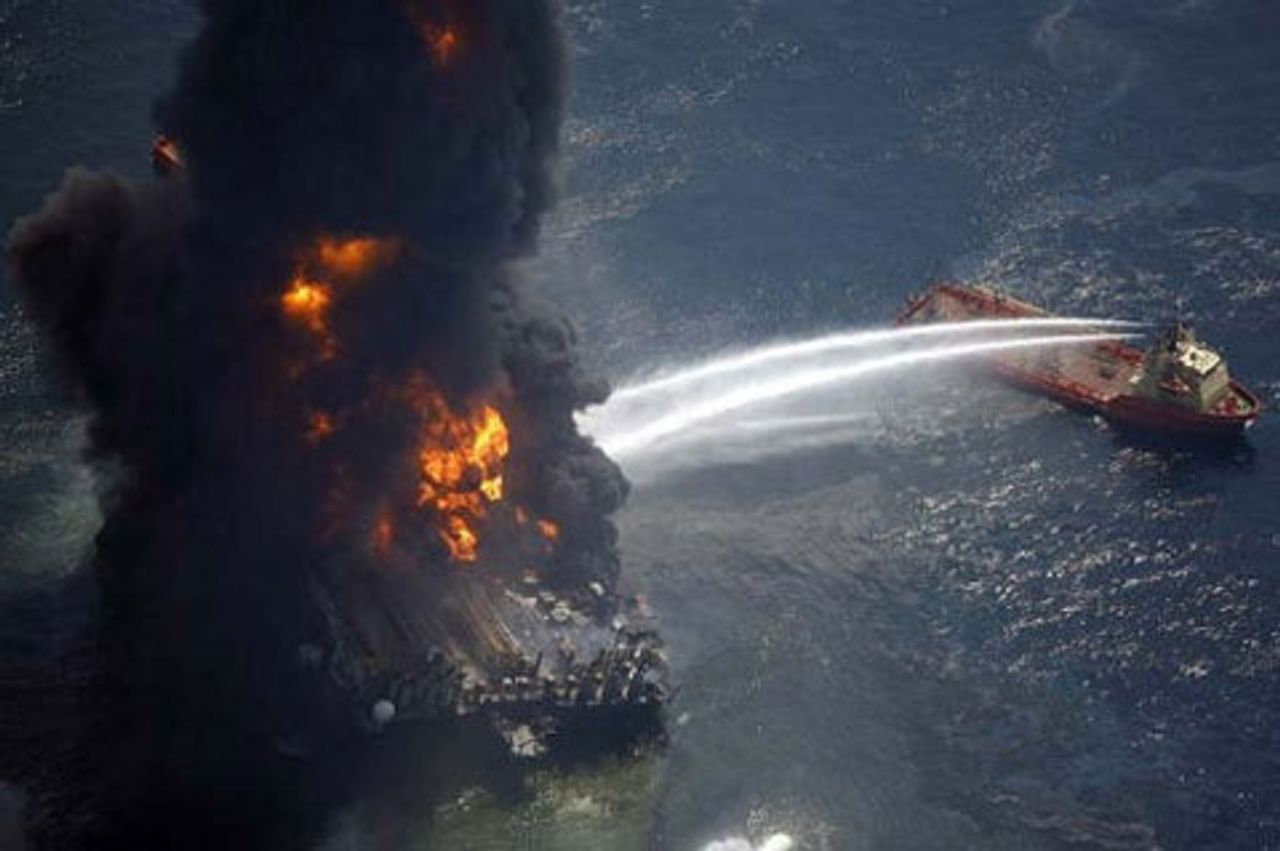Since the April 20 explosion of the Deepwater Horizon oil rig—owned by Transocean and leased by oil drilling giant BP—the companies involved have been maneuvering to avoid paying damages to the workers killed.
 Transocean Deepwater Horizon oil rig fire off the Louisiana coast (Photo © 2010 by http://www.offshoreinjuries.com/. All rights reserved.)
Transocean Deepwater Horizon oil rig fire off the Louisiana coast (Photo © 2010 by http://www.offshoreinjuries.com/. All rights reserved.)The process started as soon as the disaster occurred. Instead of moving the survivors to land—a two-hour trip—and putting them in contact with their families, they were kept offshore on a separate platform, according to one survivor of the blast, speaking on condition of anonymity.
During this time, the survivors were given no access to the rig’s only satellite phone, which they were told was reserved for official use. As their families waited in agony to find out who was alive, the workers were interrogated by BP lawyers and coast guard personnel.
While they were kept offshore, the men were told to take drug tests. After the ongoing trauma of seeing their co-workers killed, having barely escaped with their lives, the workers were also told to sign forms certifying that they were not injured.
Prior to the explosion, the workers, some manning their stations and some sleeping during their off-time, were alarmed by rumbling sounds as mud and methane travelled up the drill pipe. Suddenly, they were exposed to an enormous blast that engulfed the deck of the Deepwater Horizon. They dodged fire and debris to man their stations, until they were given the order to abandon the rig.
Some jumped dozens of feet into ocean. Others crowded into the two remaining fiberglass lifeboats, piling one on another in an attempt to make room for the injured. Half of the lifeboats on the ship were engulfed in flames and could not be reached, and those that remained were overcrowded.
When the workers finally reached the supply boat that ferried them to safety, they sought to treat the injured in the ship’s infirmary, according to the worker who survived. After spending several hours on the ship, they were transferred—not to shore, but to an unused offshore oil rig. At this point they were told to take drug tests and sign the statements.
Nearly 30 hours after the explosion, the men were finally moved to land, but not set at liberty. They were taken to a hotel in New Orleans, Louisiana, where they were kept separated from the public and media by armed security personnel.
Lawyers representing the workers plan to argue that these actions further hurt the worker’s mental and physical well-being.
Meanwhile, more evidence has come out pointing to negligence on the part of BP. Mike Papantonio, a lawyer whose firm is representing shrimpers and fishermen in a class-action lawsuit, has publicly disclosed several revelations, as yet unverified with public sources.
Among the most important, Papantonio said he was informed by workers at Deepwater Horizon that the rig was drilling for oil at 25,000 feet below the sea bed, far deeper than allowed by its permit of 20,000 feet. BP has denied the claim.
In all public statements, BP has attempted to make the claim that it had no way of predicting the blowout, much less the failure of the entire blowout preventer system. But this is manifestly contradicted by the evidence. In a publicly available 2004 document, the Minerals Management Service found that most deep-sea blowout preventers failed when used at their maximum rated depths. Given the depth at which the deepwater horizon was operating, a total blowout preventer failure was a clear possibility.
As Gordon, Elias, and Seeley, a law-firm representing several victims in the explosion, noted, “This study’s results are known, or clearly should be known, by BP and Transocean. Unfortunately, when the study says, a ‘...major safety and/or environmental event....’ would occur was apparently intentionally brushed aside by both BP and Transocean in the interests of corporate profits.”
